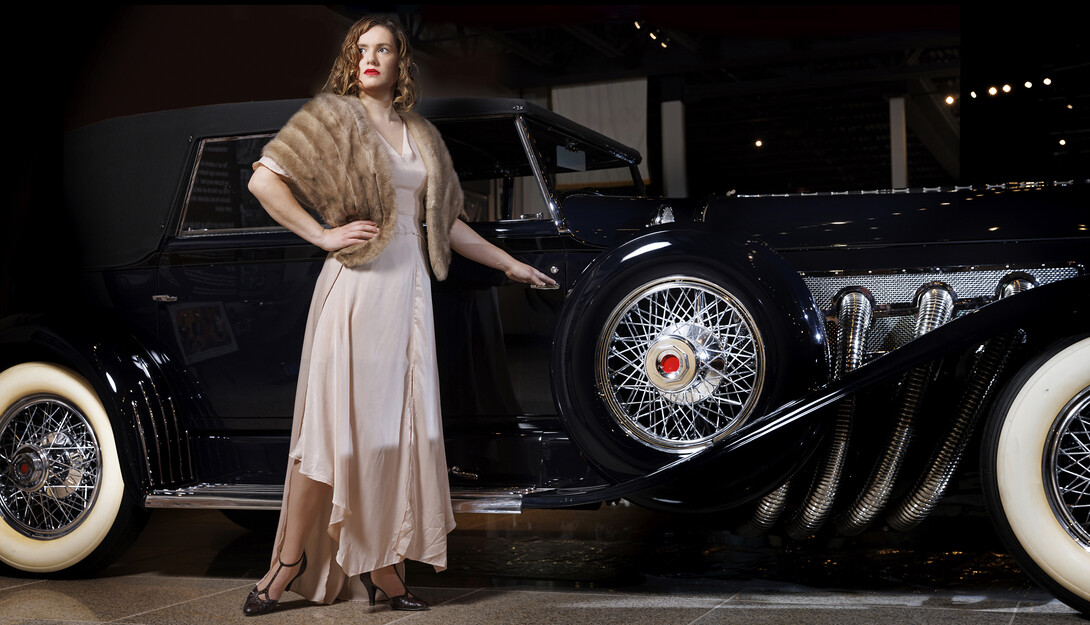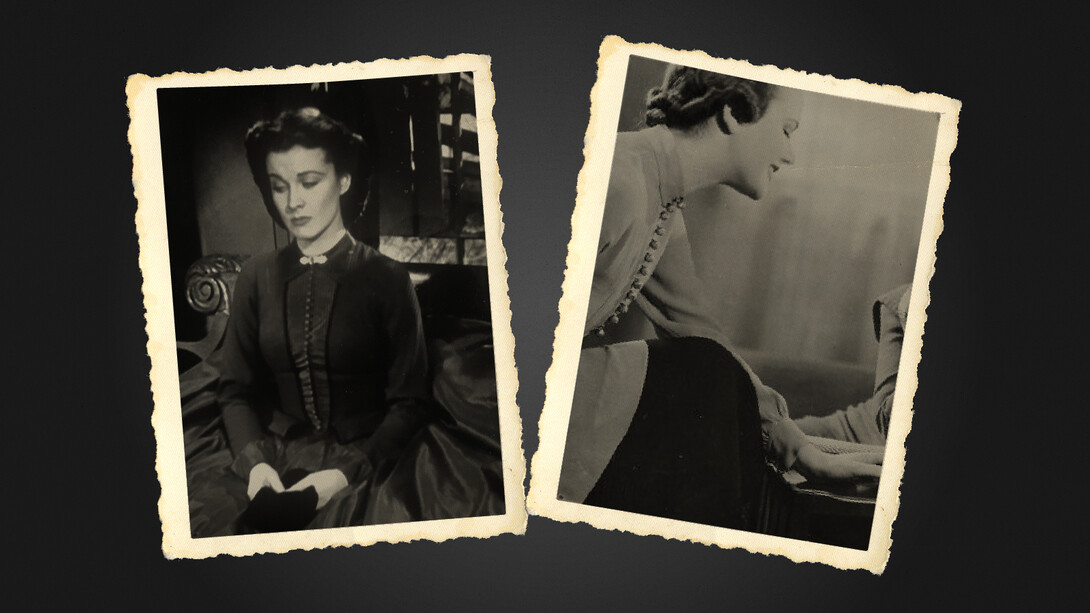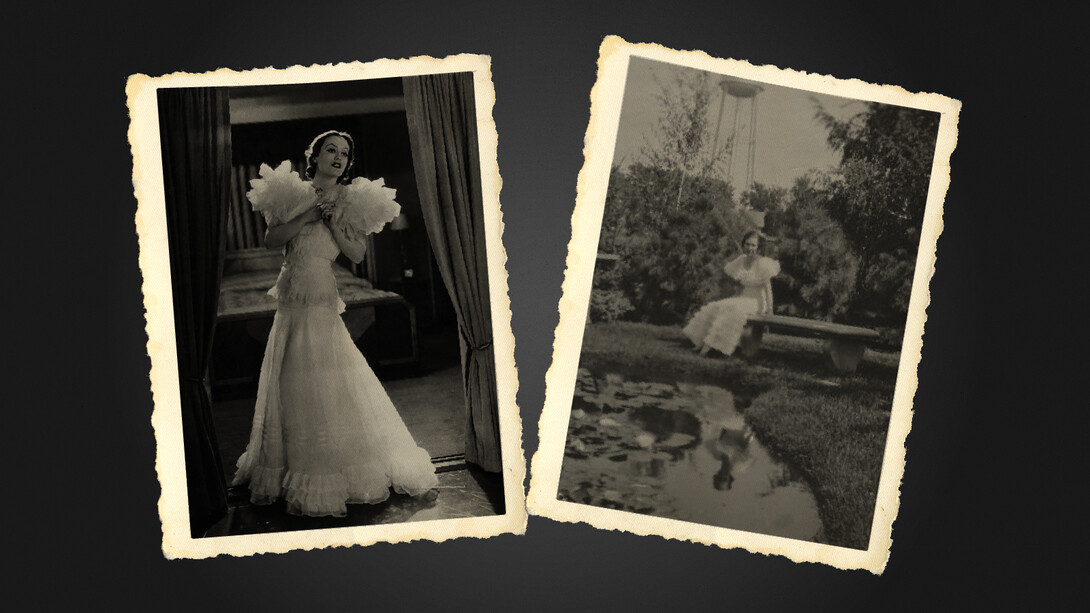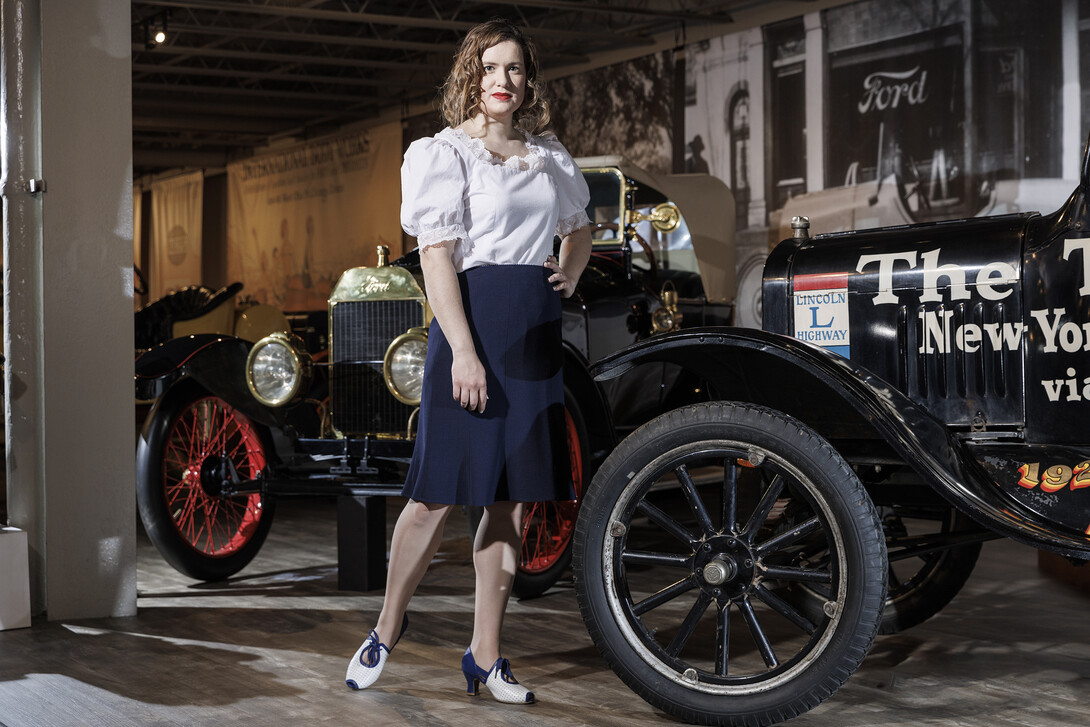
By the end of “Gone with the Wind,” Rhett Butler didn’t give a damn about Scarlett O’Hara, but millions of American women did — and gave rapt attention to her multiple costumes.
The mid-19th century fashion depicted in the film, with its corsets and hoop skirts, wasn’t particularly practical for 1939, when the film debuted. But details from Scarlett’s many dresses and other costumes of 1930s films — the prints, embellishments, fabrics and closures — entered the fashion zeitgeist, even in Nebraska, according to research from Husker scholar and alumna Anna Kuhlman.
Kuhlman, who grew up in Andover, Kansas, and came to the University of Nebraska–Lincoln as an undergrad in fashion merchandising and design, has long been fascinated with historical fashion and popular culture. As a child, she volunteered at a living history museum near her hometown, where she dressed in period clothing and remembered it as one of the “coolest things ever.” She also gravitated toward the American Girl doll and book line, which followed the stories of fictional girls living through very real American history, along with the clothing they wore.

As a master’s student in material culture and textile studies, she continued her studies on historical fashion practices, trends, fabrics and adornments.
“I’ve always been personally interested in the fashion of the early 20th century,” Kuhlman said. “The Great Depression, and World War II later on, really did change the way fashion was interacted with, purchased and seen. There was already a lot of existing research on World War II fashion, but less on the Depression. I focused on Nebraska because of our collection here and other resources, but also because there’s less known about the Midwest. I hadn’t really ever seen what fashion looked like for women here in that time.”
In her thesis research, she discovered that, though the fashion magazines of the 1930s often hoisted industry trends first, the popularity of cinema propelled those styles into department stores everywhere.

“A common pattern observed through the research was evidence of a trend at least several months before a film’s release, then its exaggeration by costume designers for specific film(s), which was then modified by manufacturers/retailers to sell to consumers matching their tastes, needs and price points,” she wrote in the thesis, “The Making of Everyday Hollywood: 1930s Influence on Everyday Women’s Fashion in Nebraska.”
Seeing movies in theaters has long been a popular American pastime, even during the Great Depression, when 46-68% of the U.S. population attended movies weekly — with most of the audience members being women, according to a 2001 research article by R. Butsch. Additionally, more ready-to-wear clothing had been adopted by the middle class at the turn of the century.
To understand how film fashion translated to the state’s middle-class women, Kuhlman dove into the archives of Vogue magazine; five 1930s films and their accompanying promotional materials in film magazines; the garment collection in the Department of Textiles, Merchandising and Fashion Design; and more than 500 photos from History Nebraska.
The films Kuhlman picked were based on their popularity, showings in Nebraska theaters, year of release, and the fame of the actors and actresses in lead roles: “Letty Lynton” (1932), “It Happened One Night” (1934), “Mannequin” (1937), “Bluebeard’s Eighth Wife” (1938) and “Gone with the Wind” (1939).
“Joan Crawford, and her film ‘Letty Lynton,’ was known by scholars very specifically as the one that started the fashion-copying film craze, especially the dress,” Kuhlman said. “A lot of previous research has pointed to that film as a kickoff point. Similarly, for ‘Gone with the Wind,’ the barbeque dress from that film, a green floral one, is also cited as one of the most copied looks.”

Kuhlman found that was true in Nebraska, too. She noted that 25 photos taken after the release of “Letty Lynton” featured clothing similar to the movie’s fashion, including the famous dress, with its voluminous sleeves and svelte fit. “Gone with the Wind,” meanwhile, yielded similar styles in 20 photographs.
“(The) big picture is that fashions that had more promotion and more screen time were the ones that tended to be the more copied ones,” Kuhlman said. “There might have been a very cool dress in a film, but if it only had two minutes of screen time, then none of the magazines or any other promotional materials really had pictures of it.”
For example, Kuhlman noted that “It Happened One Night” — in which the main character, played by Claudette Colbert, spends nearly the entire film in a striped top and black skirt — likely played a role in the adoption of stripes and a more comfortable business attire made of knit fabrics.

“Knitwear was definitely gaining in popularity, but I think Hollywood and that movie popularized it more,” Kuhlman said. “With the success of the film, this look, specifically with the stripes, was copied more, and I think it perpetuated the idea of knitwear. It became more socially acceptable to wear clothing that was a little bit more comfortable, and probably was a precursor to athleisure wear.”
Few fashions were copied exactly, Kuhlman said, but they could be traced back to the films of the era.
“They were made practical for what those women did in their lives,” she said. “They were moms, teachers, nurses. They made those film fashions suitable for what they were doing.”
Kuhlman, who graduated with her master’s degree in May, continues to work with the Historic Textile and Costume Collections in the Department of Textiles, Merchandising and Fashion Design. She’s also using her knowledge of historical textiles and clothing at Stuhr Museum in Grand Island, where she is reproducing period costumes for the living history museum.








